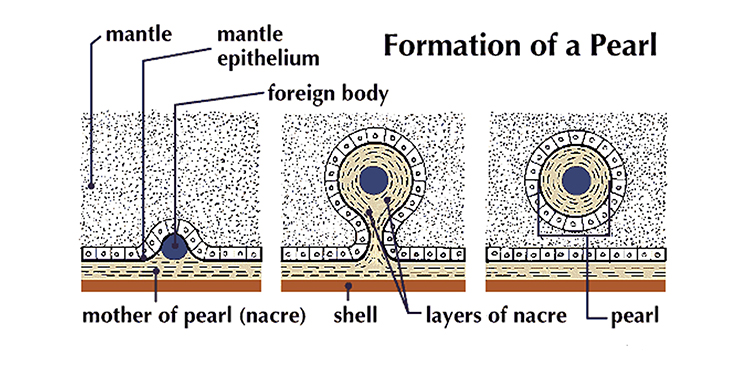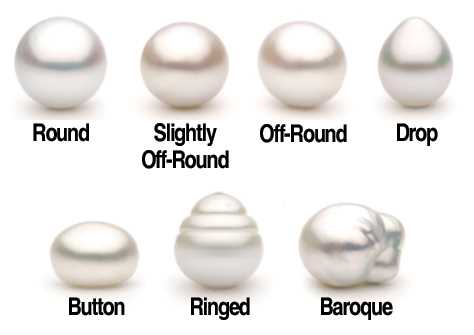
The Birth of a Pearl: Nature’s Gentle Alchemy
Share
Far beneath the surface of calm waters, inside the protective shell of a mollusk, something rare begins to take form — not forged by fire, but by time, patience, and a quiet act of self-protection.
A Beautiful Response to an Intrusion
Pearls begin their life when a foreign particle — like a grain of sand, a parasite, or a piece of broken shell — finds its way inside a mollusk such as an oyster, mussel, or clam. It’s an uninvited guest that disturbs the soft inner tissue of the creature.
But instead of rejecting it violently, the mollusk responds with elegance: it wraps the irritant in countless layers of a silky substance called nacre, also known as mother-of-pearl.
Nacre is made of microscopic crystals of calcium carbonate and proteins, arranged in a way that reflects light in soft, iridescent waves. Over time, this layered coating builds up to become what we recognize as a pearl — smooth, luminous, and perfectly imperfect.

Natural vs. Cultured Pearls
- Natural pearls are extremely rare and form entirely by chance in the wild. Divers once searched for them for weeks and found only a few.
- Cultured pearls are created with a little help: a tiny bead or piece of tissue is gently placed into the mollusk by hand. From there, nature takes over. The pearl grows organically in the same way — through years of nacre layering — making it just as real and precious.
Whether natural or cultured, no two pearls are ever the same. Their size, shape, glow, and color are influenced by the species of mollusk, the water’s temperature and purity, and the time they are allowed to grow — usually between 6 months to several years.

Types of Pearls
Pearls come in many varieties:
- Freshwater pearls, often grown in lakes and rivers, known for their irregular shapes and soft pastel colors.
- Saltwater pearls such as Akoya, Tahitian, and South Sea, which tend to be rounder and have a higher luster.
- Baroque pearls, with their organic, asymmetrical shapes — each one a tiny sculpture of nature.

A Symbol of Transformation
Pearls are often called the “tears of the sea,” but they are really symbols of resilience and transformation. From an irritation, a treasure is born — slowly, quietly, and without force.
At RIFF THE LABEL, we choose pearls not only for their beauty, but for what they stand for. Each one tells a story of time, softness, and strength — just like the people who wear them.

